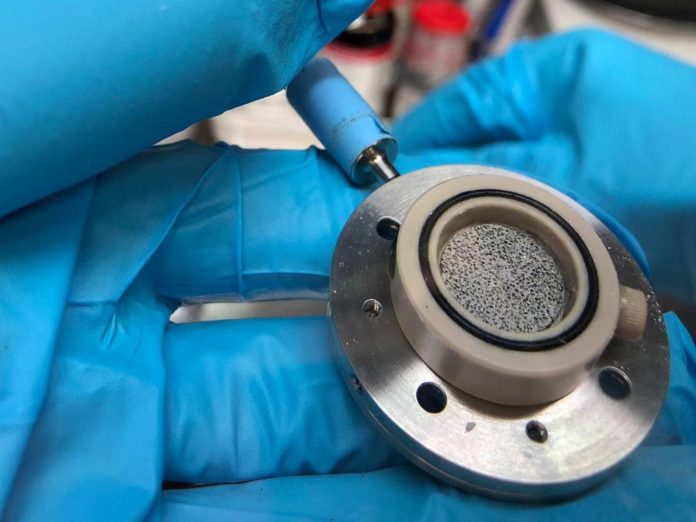
Scientists at Helmholtz-Zentrum Berlin (HZB) have discovered a way to make lithium-ion batteries more powerful and durable by using tin foam.
Their research, published in Advanced Science, shows that this highly porous material can reduce mechanical stress inside batteries, making them last longer and store more energy.
Most lithium-ion batteries today use graphite electrodes, which allow lithium ions to move in and out smoothly during charging and discharging.
While this process works well, graphite has a limited capacity, which means batteries need to be recharged more often.
Scientists have been exploring metal-based electrodes, such as tin and aluminum, because they can hold much more lithium—up to three times more than graphite.
However, these materials have a major problem: they expand and contract significantly during charging and discharging, leading to cracks and fast wear.
To solve this issue, Dr. Francisco Garcia-Moreno and his team developed a new tin foam electrode.
This material is full of tiny micrometer-sized pores, allowing it to absorb the expansion and contraction that happens when lithium ions move in and out. This prevents the material from cracking and makes the battery more stable.
The researchers used high-resolution X-ray imaging to study how different types of tin electrodes change during use. With the help of Dr. Nikolai Kardjilov and Dr. André Hilger, they tracked the structure of the electrodes in real time, confirming that tin foam significantly reduces mechanical stress.
A promising alternative for future batteries
The tin foam was developed at TU Berlin and has several advantages:
✅ Higher Capacity – Stores much more lithium than graphite, leading to longer battery life.
✅ Better Durability – The porous structure prevents cracking and wear.
✅ Economical Option – Although tin foam costs more than regular tin foil, it is much cheaper than other advanced nanostructured materials.
Scientists believe tin foam could revolutionize lithium-ion batteries, making them longer-lasting and more efficient. This could be especially useful for electric vehicles, smartphones, and renewable energy storage.
With this breakthrough, we are one step closer to more powerful, durable, and affordable batteries—all thanks to a material as simple as tin foam!



